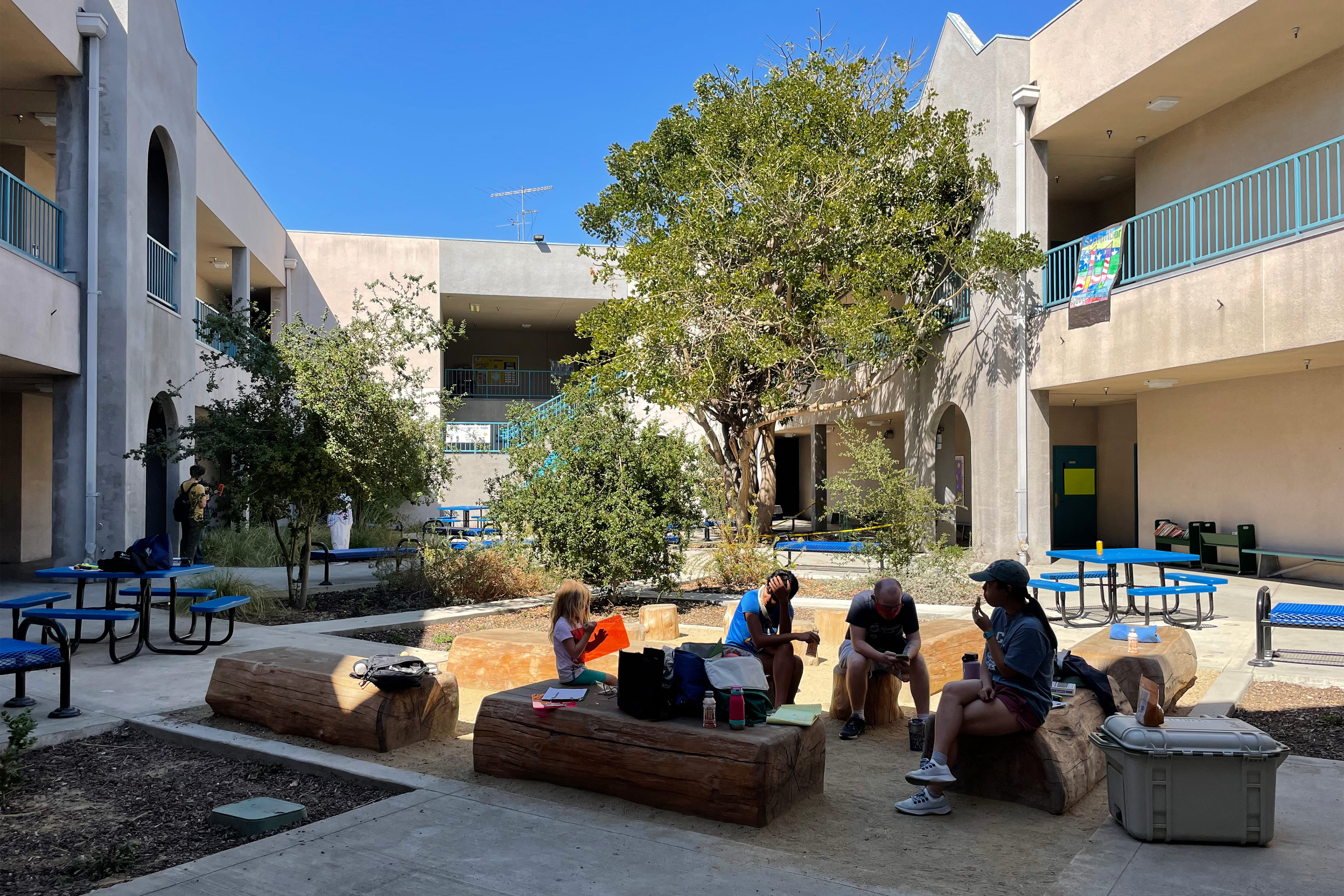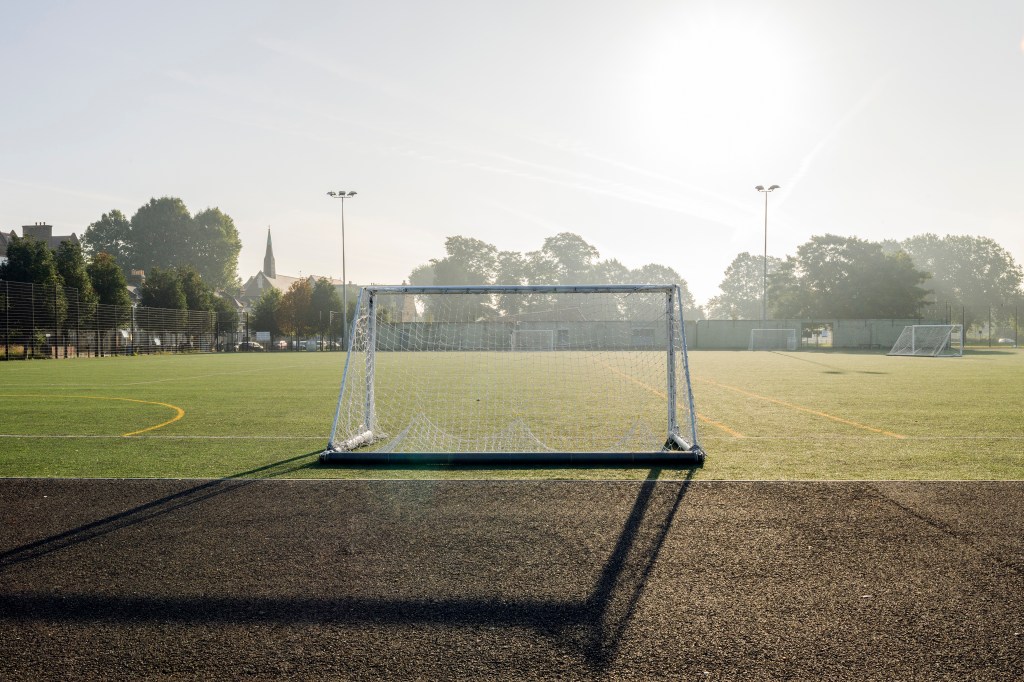As hot days become more extreme and common, California education researchers are urging that school districts be required to develop heat plans to keep students safe, just as they have policies for severe storms and active shooters.
A policy brief published last month by the UCLA Luskin Center for Innovation offers a series of recommendations on how education and building codes can help schools become more heat-resilient in the face of global warming. State Sen. Caroline Menjivar, a Democrat, introduced legislation this year requiring schools to have heat plans by 2027, and another bill would make it easier for schools to create more shaded spaces.
“Obviously, the California Education Board wasn’t set up to think about climate change. But now that climate change is a reality, virtually every sector is going to have to think about it,” said V. Kelly Turner, an urban planning associate professor and the director of the Luskin Center.
The center’s recommendations include steps such as setting an indoor temperature limit, documenting the air-conditioning and shade infrastructure of each school, and investing in shade and greenery for play areas. The brief also calls out areas needing more research, such as the safest indoor temperature range.
The best way to keep kids cool is perhaps the most obvious: providing shade, which can reduce the heat stress experienced throughout the day by 25% to 35%, according to the Luskin Center.
That requires reconfiguring playgrounds to make them cooler, said Perry Sheffield, a pediatrician and an environmental medicine researcher at Mount Sinai in New York City. In addition to shade, swapping heat-absorbing materials like asphalt and rubber for grass and wood chips helps cool things down.
“The more we can encourage play as well as physical activity, the healthier our kids are going to be, so figuring out a way to do that safely is really key,” said Sheffield.
On a playground in the San Fernando Valley, Turner said, she once measured 145-degree asphalt and 162-degree rubber — hot enough to cause a third-degree burn in seconds.
California already has millions of dollars of grant funding available for greening schoolyards and increasing tree canopy, such as the Urban and Community Forestry grants through Cal Fire that set a goal to shade at least 30% of school campuses.
To help schools make the best use of funding for extra trees, Turner and her graduate student Morgan Rogers are modeling how increasing the tree canopy to 30% can affect heat stress. They will compare different tree configurations, like dispersed or clustered, and hope to issue recommendations this fall.
Legislators in Sacramento are also looking at amending state building codes to make it easier for schools to install shade structures. Currently, the rules require that an additional 20% of the budget be spent on any new construction or renovation to make an accessible path to the completed project. The bill would add an exception for free-standing shade structures.
Schools would still be required to meet accessibility requirements, but installing a shade structure wouldn’t trigger additional construction. “That’s what we are asking, not to be exempted from those requirements, but to not put the burden on the shade structure,” said Mark Hovatter, chief facilities executive of the Los Angeles Unified School District.
Menjivar said she was excited to see the new UCLA research. Her bill would require the state Department of Education to develop a template for schools to follow in creating their own heat plans, which would have to be completed by 2025 for implementation in 2027. The bill recently passed the state Senate and is now being considered in the Assembly.
Schools outside California are also reckoning with the heat. Researchers at Arizona State University partnered with public health experts and school leaders last spring to develop guidelines for “HeatReady Schools.” The 30 recommendations span topics like school policy (e.g., access to a health professional), the environment (shade coverage on at least half the playground), and training (workshops on identifying heat illness).
The program is working with 35 schools and community centers in Phoenix, with plans to expand to all of Maricopa County by 2026.
Preparing for the warming climate is front of mind for Principal Brad Rumble at Esperanza Elementary School in Los Angeles. The school’s heat-resilience efforts started with filling empty tree wells in front of the campus in 2014. Now, the school boasts a shaded courtyard and a native plant garden, and, courtesy of a grant from the district, more trees are on the way.
“We work together to make sure that our students’ needs are addressed on hot days,” Rumble said. “And, certainly, as more shade becomes available on this campus, we will be able to address those needs even better.”




